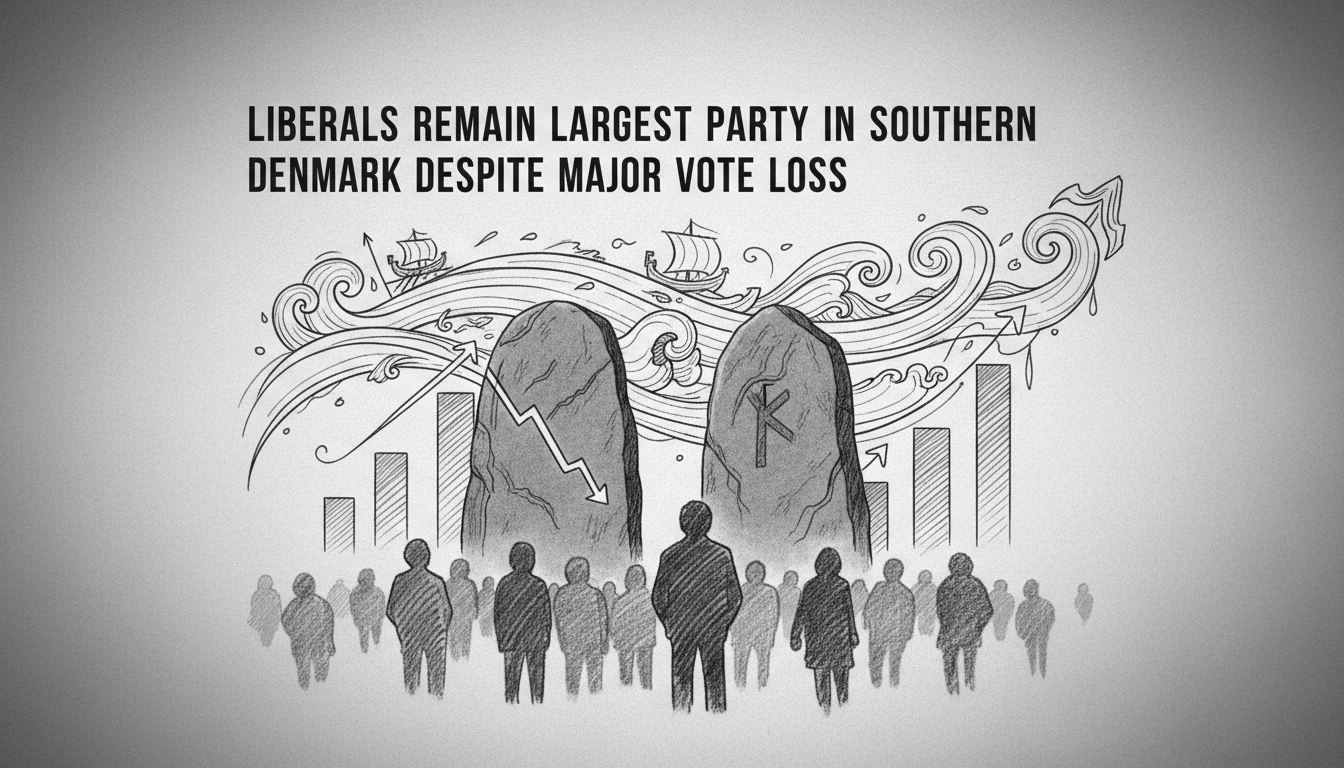The Liberal Party has maintained its position as the largest political force in Southern Denmark despite suffering substantial voter losses in recent regional elections. Party leader Bo Libergren will continue leading the region even as his party's support dropped by 14.1 percentage points.
The Liberals secured 25.1 percent of votes in Tuesday's election. This represents a significant decline from their previous standing. The Social Democrats also experienced a slight decrease, becoming the second-largest party with 22.8 percent of ballots.
While both major parties lost ground, two smaller parties made notable gains. The Socialist People's Party increased its support by 3.4 percentage points. The Danish People's Party saw an even larger jump of 6.8 percentage points.
The Denmark Democrats participated in their first regional election, capturing 6.4 percent of votes. This newcomer performance suggests shifting political dynamics across the region.
Bo Libergren currently serves as regional chairman, having replaced Stephanie Lose when she became Economy Minister. The Liberal Party has held the chairman position in Southern Denmark since regions were established in 2007. Libergren has served on the regional council since that time and also held a seat on Odense City Council between 2014 and 2017.
Stephanie Lose previously chaired the region from 2015 until her ministerial appointment. She proved exceptionally popular with voters, gathering over 147,000 personal votes in the 2021 election. This total vastly exceeded the second-most popular candidate.
The Liberal Party currently holds chairman positions in both Southern Denmark and Northern Jutland regions since the last regional elections. This continued dominance despite vote losses indicates the party's deep-rooted organizational strength across multiple Danish regions.
Regional elections in Denmark determine leadership for the country's five administrative regions, which primarily handle healthcare services, regional development, and public transportation. These elections often serve as important political indicators between national parliamentary contests.
The substantial voter shift away from traditional parties toward smaller alternatives reflects broader European political trends. Voters appear increasingly willing to abandon established parties for newer options that better address specific concerns. This pattern has emerged across multiple Nordic countries in recent years.
Southern Denmark represents one of the country's most economically diverse regions, encompassing both urban centers like Odense and rural agricultural areas. The political balance here often predicts national voting patterns, making these results particularly noteworthy for observers of Danish politics.
What does this mean for healthcare and regional services? The Liberal Party's continued leadership suggests policy continuity, but the stronger presence of alternative parties could influence budget negotiations and priority setting. Regional councils manage substantial healthcare budgets, so political composition directly affects service delivery.
The election outcome demonstrates that while traditional parties maintain structural advantages, voter loyalty is becoming increasingly fluid. This creates opportunities for smaller parties to gain influence through strategic positioning on key regional issues.

